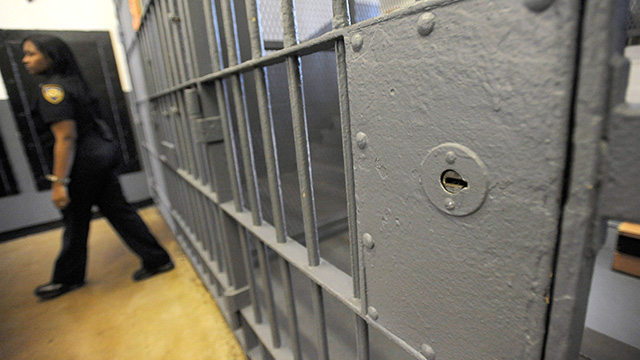This post first appeared at TalkPoverty.
In today’s economy, overwhelming debt is an unfortunate reality for millions of Americans. From credit card debt to mortgage debt to student loan debt, Americans increasingly live off of borrowed money. But few realize how the criminal justice system imposes increasing debts on individuals. Worse still, criminal justice debt perpetuates mass incarceration.
Individuals processed through the judicial system in many states are charged fees and fines at every turn. There are fines intended to punish an individual for the commission of an offense, like speeding fines. There are fees intended for repayment of any harm caused to victims, including restitution payments and contributions to victim funds.
But there are other, less visible costs as well. For example, correctional facilities across the nation charge fees to their inmates for countless reasons. The Mason County Detention Center in Kentucky charges $25 a day to stay at the facility, in addition to a $20 booking fee, a $5 release fee, and a $7 medical co-payment fee. Other jails charge for toilet paper and clothing. Then there are fees for using the criminal justice system itself. Forty-three states and the District of Columbia allow fees for a public defender, and 44 states charge individuals for using probation services. Though many of these fees may seem relatively small – public defender fees range from about $50 to $200 – they add up quickly and a defendant can emerge from the system with thousands of dollars in debt.
These charges are an outgrowth of mass incarceration. As the criminal justice system expanded to include almost seven million individuals under correctional control through supervision or incarceration, so did its costs. States – many facing tight or disappearing budgets – chose to shift the increasing cost burden to defendants instead of picking up the tab. For example, in Ferguson, Missouri, the city relied on rising municipal court fines to make up 20 percent of its $12 million operating budget in fiscal year 2013. These fees and fines impose an additional penalty on individuals above and beyond their actual sentences. Even worse, it is at cross-purposes with the goal of release: to reintegrate the individual as a productive member of society. This is an extremely difficult goal to accomplish when one is already set back by a mountain of debt.
“Criminal justice debt” refers to the accrual of these fees and fines, and they are onerous for most individuals entering the justice system. Approximately 80 percent of those who enter the criminal justice system cannot afford an attorney for their own defense, which suggests that they have little additional savings to pay back new debts. Upon release from incarceration, the average formerly incarcerated white male earns about $11,140, or just around the federal poverty line. Studies demonstrate that African-Americans and Hispanics who are released from prison earn even less. All the while, new debts await their return to the community.
The collection of criminal justice debt can be aggressive and further prevent successful integration. Some individuals face the withholding of income from paychecks. Others face liens on their homes. Placing barriers to obtaining a driver’s license is a common practice among the states, even though it frequently impedes an individual’s ability to secure employment.
In many jurisdictions around the country, failure to pay criminal debt extends an otherwise law-abiding individual’s entanglement in the justice system. Many states extend the term of supervision for failure to pay, despite the reality that supervision costs money. Another enforcement mechanism – the issuance of warrants for nonpayment of fees – pulls individuals before the court and may result in incarceration. Therefore, an individual can pay a penalty for an offense, and then be incarcerated for failing to pay off the debt incurred as a result of that offense.
Ironically, these tactics are costly to the state. Probation officers, judges and court personnel must spend time serving as debt collectors. The privatization of debt collection is increasingly common, but the success of these companies is difficult to assess. By 2011, uncollected criminal justice debt in the United States totaled $50 billion. Very little of this debt will be collected. Florida, for example, expects to recover just 9 percent of the fees and fines imposed in felony cases. In Washington State, the county clerks collect, on average, less than 5 percent of the total fees and fines imposed in a particular case.
In the end, criminal justice debt burdens more than just the individual caught up in the criminal justice system. It burdens the state through collection. It burdens the family of the individual who cannot cover the debt payments necessary to stay out of jail, so the family tries to pay it for him. It burdens the communities where these individuals return because criminal justice debt perpetuates poverty and prevents the accrual of resources necessary for socioeconomic equality. Moreover, criminal justice debt hinders re-entry, often leading to extended periods of court-supervision and incarceration for individuals unable to pay. Such realities burden society at large by threatening public safety and increasing incarceration in already overburdened jail systems. These realities make clear that criminal justice debt reflects bad policy.
The Brennan Center for Justice, along with a growing number of policy organizations, practitioners and academics, are working to improve the policies surrounding criminal justice debt. Reforms include advocating for the elimination of fees for using the criminal justice system – like the elimination of jail fees for the incarceration of individuals the state chooses to detain. It also includes improving the assessment of whether an individual has the ability to pay fees and fines prior to their imposition. Finally, on a broader scale, addressing criminal justice debt requires recalibration of the justice system to understand exactly how resources are spent, and why. These steps are all part of a bigger battle to reduce our overreliance on incarceration – with its harmful side effects – in order to create a more rational and fair justice system.
The views expressed in this post are the author’s alone, and presented here to offer a variety of perspectives to our readers.




